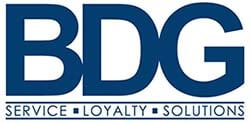With the purchase of real property come the interests and benefits of ownership. However, restrictive covenants are legal agreements that can alter the use, value and sustainability of an investment. Whether a restrictive covenant affects a corporation’s inherent...
Real Estate
What are the types of commercial property easements?
When dealing with commercial real estate in California, you may encounter a legal concept known as easements. An easement is the right to use a part of another person's property for a specific purpose. This issue can often cause disputes or challenges, especially if...
What are subsurface rights?
When you own real estate, you likely own what the law refers to as surface and subsurface rights. Surface rights are easy to identify and include everything from the trees on your property to structures. What are subsurface rights, though? Ranger Land and Minerals...
Examples of affirmative and negative easements
An easement is the right of one party to use or control part of another's property. The easement generally includes specific terms that both parties abide by. Easements take many forms, but they all fall into one of two categories: affirmative and negative....
How can your business avoid a real estate dispute?
If your business needs to invest in a piece of commercial real estate, you might feel like you are somewhat out of your element. After all, while you have honed your business model, you have little experience with buying commercial property. A real estate dispute has...
What are signs of a fraudulent conveyance?
Someone in significant debt could run the risk of losing valuable property such as real estate to creditors. However, the debtor might attempt to prevent a creditor from seizing the property by using a fraudulent conveyance to transfer it to another party. Per Sfgate,...
How to strengthen your case in a property line dispute
A California property line dispute has the potential to cause lasting damage to relationships between neighbors. Yet, these disputes are not uncommon, and this is likely due in part to the fact that property lines are invisible, leading to conflicts over where...
What should I understand about a contract novation?
Negotiations to set up the commercial use of a property are not always easy. Sometimes even after the signing of a contract, events compel the signatories to the agreement to come back to renegotiate the deal. This may result in a contract novation. The Motley Fool...
How can you protect commercial real estate investments?
Investing in commercial real estate in California allows you to diversify your portfolio and increase your residual income. However, market volatility, bad tenants and even natural disasters could impact your returns. Knowing how to fortify your commercial real estate...
Who should maintain an easement on your property?
Having an easement may not be the most welcome news for your property, but it may be necessary so that another property owner can access landlocked property just beyond your land. With the easement established, you might wonder who has the responsibility of keeping up...

